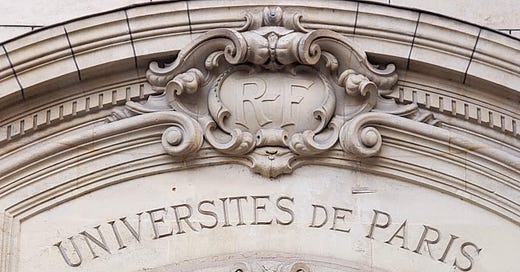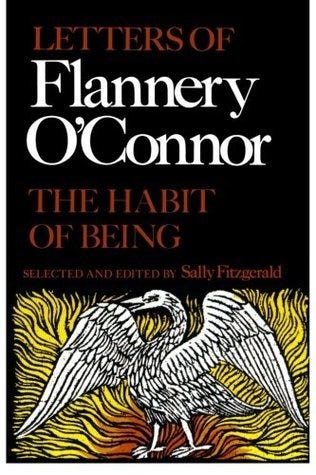Writers Lab: Paris, Flannery O'Connor, Marjorie Kinnan Rawlings: Write Your Story
Part 2 of our Food, Firsts, and Ancient Ones assignment
Isn’t it just like me, when getting ready to travel for work, to begin planning a trip for fun? I do it every time. I leave Saturday for the DC area, to work in six (count ‘em) Title 1 schools, grades K-2 in the morning, grades 3-5 in the afternoon. They’ve asked me to work with We Are All Under One Wide Sky for K-2 and with Love, Ruby Lavender for grades 3-5, and I will be happy to do that, plus facilitate a family literacy evening on my last day there.
Putting together a trip like this, when I’m driving so I can go through Charlottesville for research on my way home, has so many moving parts. I will be very glad to do this work once I’m “in it” — it’s very good work, showing how life turns into story and encouraging young readers and writers — and families — to tell and write their stories. I get bogged down in planning details at some point and begin day-dreaming of a trip that’s “just for fun,” but who am I kidding? I can plan it all I want, but a trip is always for working, on some level, maybe because I have gotten into the habit of looking at everything through the lens of curiosity, and potentially as a story.
Jim and I went to Paris in October 2023, a trip that was delayed by 50 years (50!), which is a story for another time, but while there, in the Paris of my long-held dreams, I was writing a memoir in my head the entire time.
We went to the Sorbonne, where I had been planning, so long ago, and for most of the years of my young life, to be a student in my junior year of college and to live in Paris, but my life took a sharp left turn when I was 18, and I never got to college or to Paris. Now, here I was, sitting on a marble bench in a tiny park across from the imposing “Sorbonne Building.” (“In the 1970s, exchange students at the Sorbonne in Paris would have attended classes in the historical Sorbonne Building, which housed multiple universities and institutions.”)
I had an excellent view of the building and the huge front doors I would have entered as a junior in my exchange-student year. I began to tell Jim about those years, and I realized, I was suddenly saying my hello and my goodbye to that dream, while sitting there facing it, in that city I’d dreamed about for so long, the city of my future that was here, finally.
Then the most unexpected thing happened: I became teary-eyed with actual happiness, because I was also affirming my life as it had turned out.
It’s a good life. I am grateful for all of it, the many decades I’ve been lucky enough to live this life, the pain and the joy alike, and everything in between. Maybe this is a gift that time and maturity and growth and whatever-it-is can confer. Maybe it’s perspective. Maybe it’s that I’ve found everything I ever hoped for in my life, really. Like Dorothy says in The Wizard of Oz, I had it all along, and I knew it. I’m happy, I’m blessed, all the things we say, and I mean them. I have led a charmed life.
I will say, though, that when I saw the Eiffel Tower for the first time in my life, I wept. And I want to write that memoir.

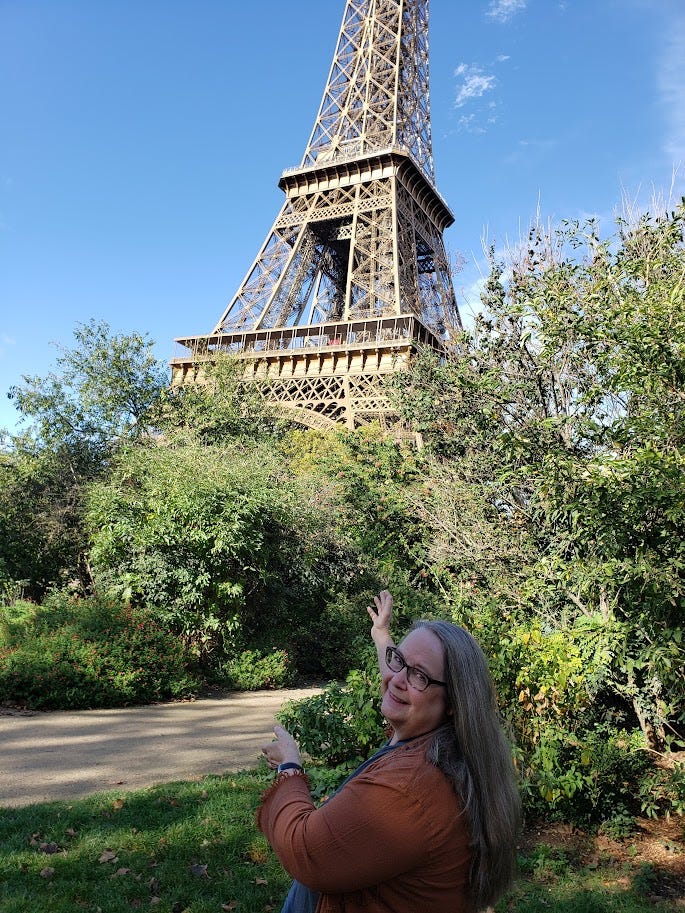

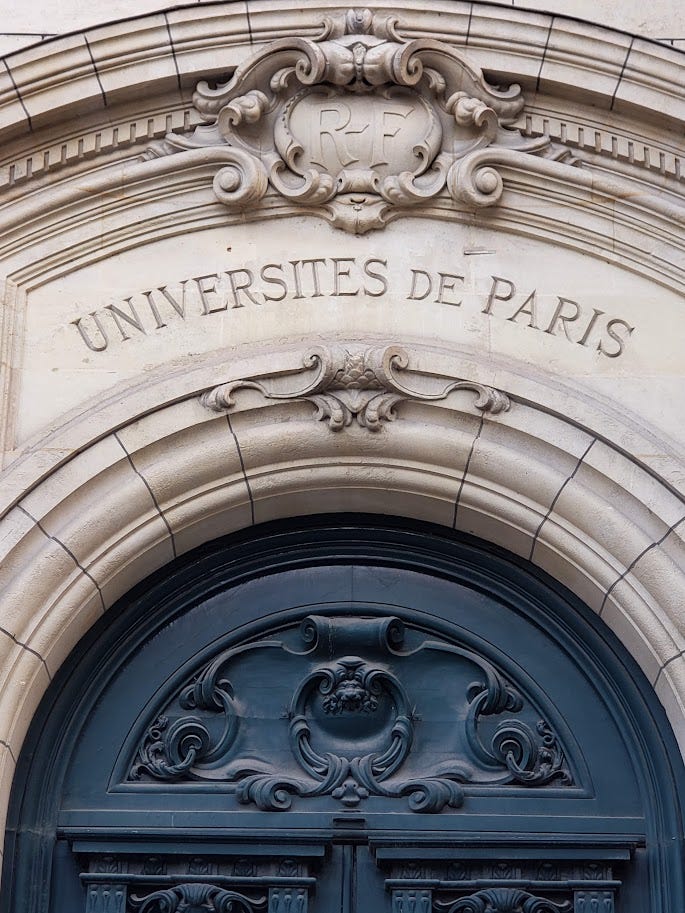
I fail (and fall) into this other-planning when I’m writing, too — do you? I’ve got this deadline for Charlottesville, and what am I doing? I’m dreaming about Ray Bradbury, and Cambria, and Hi, Evelyn!, and We Built A Pond, and even very old, unsold work, a full novel called Hang the Moon (a title I chose in 1995, that someone has used as the title for their book recently, I saw somewhere….), let me write anything but the work-at-hand. The contracted work at hand, I might add.
So let me get to the Substack work-at-hand and stop using Google Maps to chart a trip from my home in Atlanta to Andalusia, Flannery O’Connor’s homeplace in Milledgeville, Georgia, then on to Cross Creek in Florida, to Marjorie Kinnan Rawlings’ home, both places that have been on my list to visit ever since I moved to ATL twenty years ago, almost twenty-one.
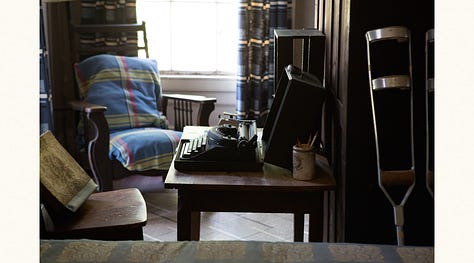
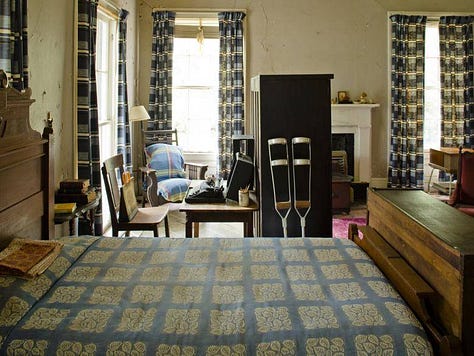
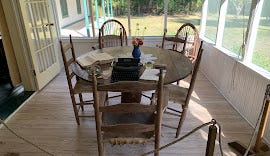
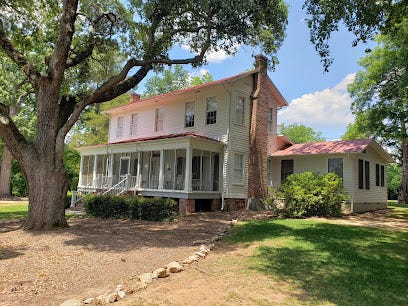

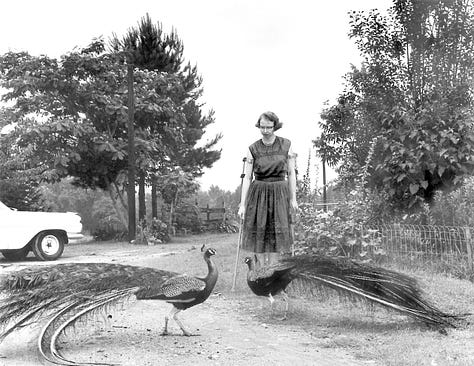
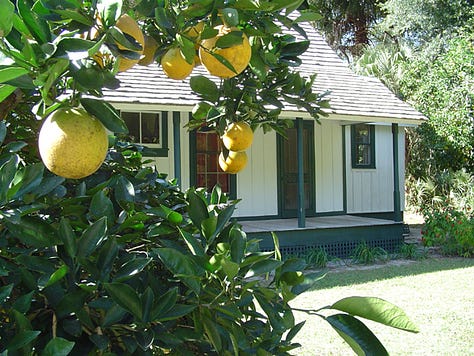
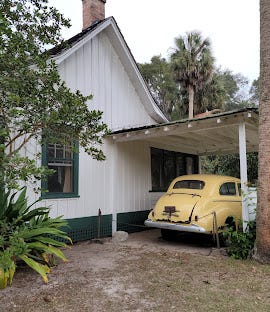
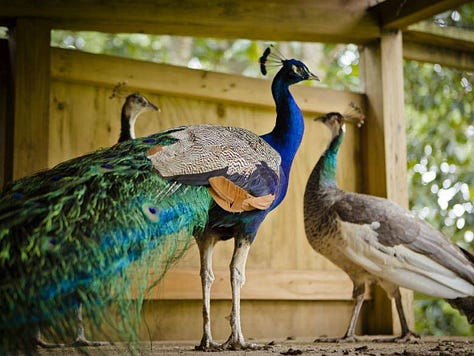
But doing that planning and daydreaming brings me to Flannery O’Connor’s birthday, which was yesterday — her 100th birthday no less! I find O’Connor’s novels and short stories hard to read, possibly because I am a wimp at heart and find horror and gothic stories hard for me to process and O’Connor — like Shirley Jackson who is equally hard for me to read (I consider this a personal failure, as I love both writers) — is so raw and honest in her work.
But, I will say, I adore Flannery O’Connor’s letters.
Her letters are collected in a book called The Habit of Being, which I used to own, but gave away over 20 years ago to a woman in Maryland who cut my hair for years, and was beside herself one day because her young-adult daughter had just been diagnosed with lupus. Flannery O’Connor had lupus, and writes, in her letters, about the disease and her increasing frailty. I don’t know what possible help that book of letters could have been to my hair-cutting friend, but I wanted to do something, and so I impulsively pressed the book into her hands one day and wished her all the luck, before I moved to Atlanta.
I haven’t read those letters since, but someone else has, and that’s where we start with the Writer’s Lab today, with this piece written by Caroline McCoy and published at LitHub online in 2019, titled “Flannery O’Connor’s Two Deepest Loves were Mayonnaise and Her Mother.” There is a subtitle, too: “A Southern Gothic Writer, A Very White Condiment.”
The first sentence got me to thinking about how we depict Mothers in our writing:
“In her short lifetime, Flannery O’Connor wrote more than 600 letters to her mother.”
I came for the Mother-talk, I stayed for the Mayo, and I did that because of last week’s Lab assignment to write about a First, a Food, and an Ancient one.
We shared some of our stories in the Chat last week, and I hope we’ll do more of that this week, as the assignment is designed to get you thinking about your own story within a framework, while writing short, and including elements that might not seem to go together, but wait!
Just as we get a kind of freedom in writing poetry to a designated form (as opposed to free verse), we are given a different way to think about our personal narrative when we take “one from column A, one from column B, one from column C” and see what they suggest.
This sort of exercise is what broke open Ruby Lavender for me, and helped me to move it from being a poem about my own childhood, to a novel with fictional characters and situations, but all coming straight out of my life.
The importance of mayonnaise in Flannery O’Connor’s life slays me! Here are a few key lines from this well-written, insightful piece by Caroline McCoy:
Of all the edibles that appear in the author’s correspondence with her mother, one inspires her most enthusiastic commentary: mayonnaise. She loves the thick, eggy spread…
She considered the condiment a staple…
The canned pineapple she chilled on her windowsill seemed lackluster without the familiar white dollop. Her tomatoes were all but naked. Where her sausages were concerned, mustard was a poor companion. She requested that her mother send her the homemade mayonnaise of her childhood…
The entire essay is good writing — and there is a bonus element in this piece I want you to notice… what’s working? We’ll talk about that in the Lab Chat this week, along with what’s working in our own writing as well.
So Flannery O’Connor’s letters are full of food. Marjorie Kinnan Rawlings lived on a 72-acre orange grove in Cross Creek hamlet, and told an interviewer from the Christian Science Monitor in 1940 that her only vanity was cooking: “I get as much satisfaction from preparing a perfect dinner for a few good friends as from turning out a perfect paragraph in my writing." Her memoir, Cross Creek, is full of the food she prepared for guests and gatherings. Her novel The Yearling describes the fried green tomatoes and fried catfish, vegetables from the garden, venison, and grits she encounters with her neighbors and how she grows to love them (the neighbors and the food).
You might imagine I’m going to ask you to write about Marjorie and oranges or Flannery and mayonnaise this week, but (alas?) no.
The assignment for this week builds on what we started last week, and has whiffs of what you’ve just read. And here it is, below. You’ll find a bit of Sissy Spacek below, too, to help you think about your writing this week.
Happy writing! Make a mess. Experiment! And share with us in the Chat!
THE ASSIGNMENT:

